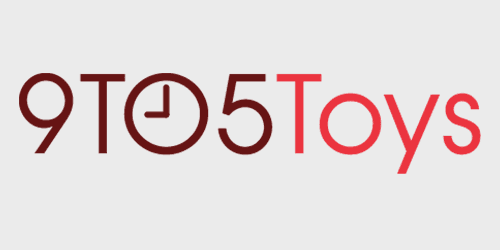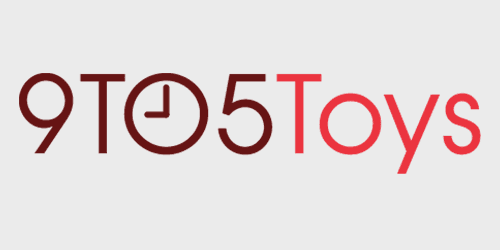
If you’ve not heard of Voxelab, well, the company is a sub-brand to FlashForge, one of the larger 3D printer manufacturers out there. Last year, we went hands-on with the company’s S2 3D printer, and now, we’re taking a look at the refreshed D1. Delivering a lot of upgrades over the previous generation, the D1 is basically everything we want in a 3D printer… though the price might be a bit more than we’d like. With an auto bed-leveling system, filament runout sensor, and larger print area, keep reading to find out all of our thoughts on the Voxelab Aquila D1 in our hands-on review.
Hands-on review of the Voxelab Aquila D1 3D printer
Let’s get some initial specs out of the way to start off with. While not a direct upgrade to the S2 that we reviewed last year (the S3 is now out), the D1 is a refreshed lineup from Voxelab that seemingly takes a lot of the community input that the company has received over the years and puts it into one printer.
The Aquila D1 delivers a larger print area of 235×235, whereas the S2 (and many others) is limited to 220×220. While 15mm might not be a lot, that little bit of extra space can be the difference between having to scale down a print or not. You’ll also find an upgraded linear rail motion system on the X and Y axis, with the Z being treated to a new dual screw system (though still only one stepper motor.) On top of that, we now have built-in auto bed leveling, filament runout detection, and open-source software. Voxelab also ditched the proprietary nozzle found in the S2 for a more industry-standard option that you can readily find for fairly affordable prices. And, the D1 can still reach 300° C on its direct-drive hotend, though that’s also been upgraded with a newer, more powerful stepper motor with 180% more wire-feeding force than previous models. And, lastly, I love that Voxelab includes a pair of cutters in the box of the Aquila D1, which is something that I’m always misplacing as I only have one pair I purchased years ago that I also use for electrical work, so now having a dedicated set for the 3D printer space is great.
With all that out of the way, let’s talk about what we like – and what we don’t like – with the Aquila D1 from Voxelab. First, what we like. Having used the Aquila S2 for the past year, I’ve done a few upgrades to it, and there are still some that I’d like to do. Well, the Aquila D1 has all of those upgrades out of the box.

Assembly was very straightforward and, honestly, easier than the S2 by far. The entire printer was assembled in just about 15 minutes, and I was printing shortly after that, thanks to many of the parts already being put together. This was a great upgrade from previous-generation models and very welcomed, especially for the higher price that the Aquila D1 goes for.
After getting through the initial setup, it was time to level the bed. With the auto bed-leveling system and the auto bed-level button in the software, I thought it’d be fairly straightforward. And it was, but only after a lot of reading and figuring things out. Once you level the bed, the nozzle is going to sit somewhere around 3mm off the bed. That has to be then adjusted in the Z offset menu, and once you do that, there’s still more work to be done. With the Z offset set and your nozzle sitting .2mm above the bed (I used a pair of feeler gauges to set this, but you can use paper), you then have to disable the steppers and move the nozzle around to the four corners and center of the bed. Doing this, you’ll use the manual leveling knobs under the bed to set the bed’s height relative to the nozzle. After all of this is done, rerun the auto bed-leveling procedure one more time, reset the Z offset, and you’ll be good to go. It took me a while to figure all of this out, but once I got it set, the printer prints flawlessly across basically the entire bed surface.

Another thing that I love is Voxelab not only moved away from a proprietary nozzle to an industry-standard one, but they also include two .6mm nozzles in the box alongside two .4mm nozzles (with one being preinstalled). Having recently moved to a .6mm nozzle on my S2, being able to immediately go to a .6mm nozzle on the D1 as soon as it came out of the package was fantastic. Printing with a .6mm nozzle still results in a very high-quality print, but for things that are more functional than decorative, you can save a lot of time and filament by going with the larger nozzle and higher layers.
Something that I struggled with on the S2 a bit was getting OctoPrint set up. Now, if you’ve never run OctoPrint, it’ll change your 3D printing experience for the better. The S2 required all kinds of custom flashing of firmware to get OctoPrint working, while the D1 works out of the box with the open-source controller software. OctoPrint allows me to wirelessly send a print job from my MacBook to the 3D printer, runs software called Octolapse (what made the time-lapse videos of the prints you see here), and even does a lot of filament tracking and calculations for me. It’s how I know how much filament I have left on a roll, how I do remote monitoring of my prints, and just generally how I run my printer. The fact that the Aquila D1 supports Octoprint out of the box is fantastic and brings Voxelab on par with printers from other manufacturers that have been doing this for a long time.

However, while there’s OctoPrint support natively, Voxelab doesn’t have all functions enabled. There’s a part of the firmware (that’s easy to change for Voxelab) that doesn’t let OctoPrint communicate the status back to the printer. This means that the Aquila D1 doesn’t show the print progress on the display, nor does it relay the filament runout sensor to OctoPrint. This would be relatively easy for Voxelab to fix, and the community can also simply patch it, thanks to the open-source nature of this printer.
Now, for the things that we aren’t as big of a fan of. The biggest is the auto bed-leveling system. I’d like to have seen it be a bit more automatic and not require me to basically do manual bed leveling on top of the auto bed leveling. It’s nice to have for sure, and it works better than not having it at all, but for $400, I was expecting something a little easier to use and hands-off. Another thing is the lack of full OctoPrint support. It’s nice to have OctoPrint support, but I wish I didn’t have to modify the firmware to get full communication between the printer and OctoPrint. And lastly is the price. At $400, this 3D printer is getting up there in price for sure. At $699 (which is $300 more, almost double), you can get the Bambu Labs P1P, which is a lot faster at printing than the Aquila D1 and more geared toward production instead of hobby. At $400, you’re nearly double the price of the Ender 3 Pro and only $50 below the Ender 3 S1 Pro. Yes, the Ender 3 S1 Pro still has a 220×220 bed, but it has auto bed leveling, a similar extruder, and features all around that make it nearly identical to the D1, just from Creality.

9to5Toys’ Take
At $400, the Voxelab Aqula D1 is a solid 3D printer, no doubt. But, the few drawbacks that we’ve mentioned do knock a few points off our final review score. If I had to give it a score, I’d say that the Aquila D1 comes in at 4/5. Voxelab could bring that up to a 4.5/5 pretty easily by fixing the auto bed leveling to at least try and get the Z offset set from the factory and full OctoPrint support. But, outside of those two complaints, the Voxelab Aquila D1 is a great 3D printer for your farm and works fantastically once dialed in.
Will I recommend the Aquila D1 to people looking for a 3D printer? I think so, but the Aquila S3 would likely be a better buy for many. It has almost all of the same functionality as the D1 but at $100 less. You lose out on the linear rails and filament runout sensor, but if those aren’t must-haves; it still delivers a 300° C nozzle and auto bed leveling – though the S3 is still limited to a 220×220 bed, unlike the 235×235 that the D1 has.

Overall, the Voxelab Aquila D1 is a great 3D printer, and I don’t think you can go wrong with picking it up. If you don’t plan to use OctoPrint and are good at doing an initial bed level, then you’ll have zero issues at all with it, and it’ll serve you great for years to come, I’m sure. But if you want the full benefit of OctoPrint with filament runout support, then the Aquila D1, at least at the time of writing, might not be the absolute best option out there.
FTC: We use income earning auto affiliate links. More.







Comments